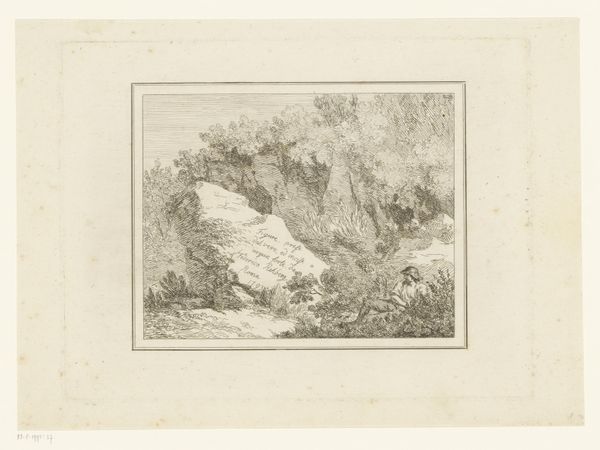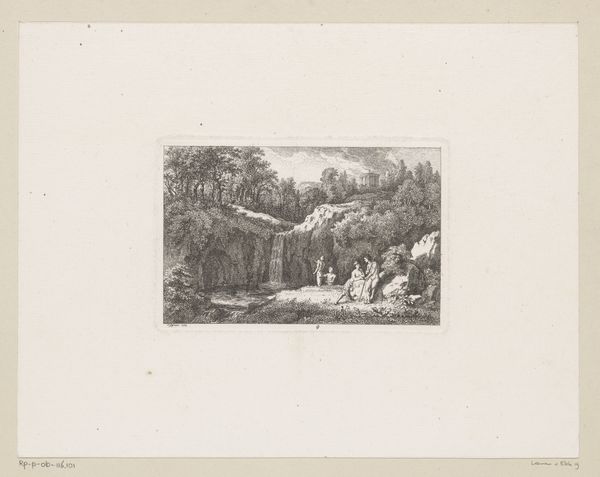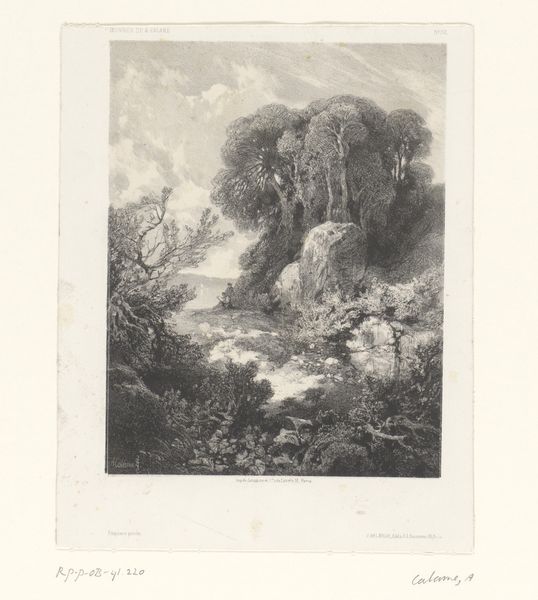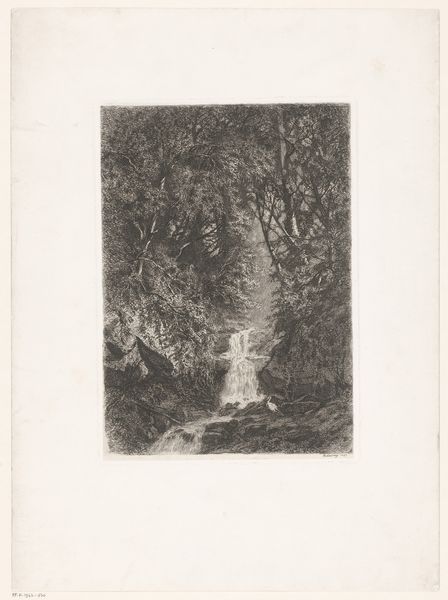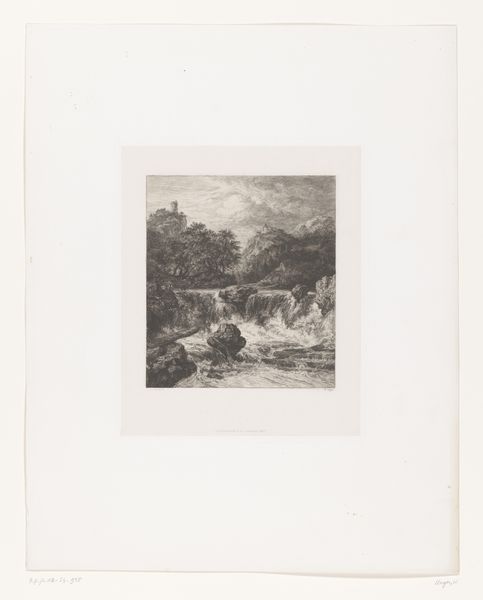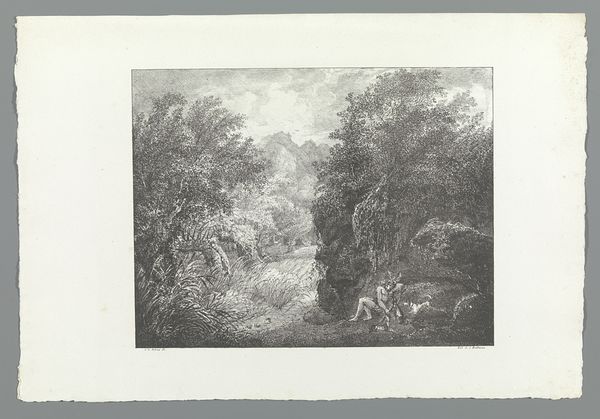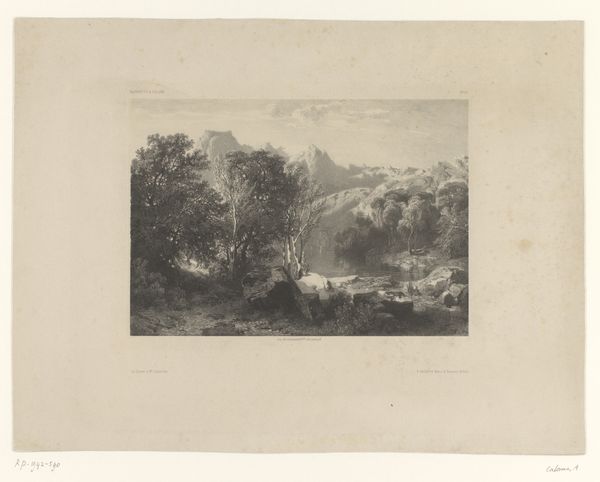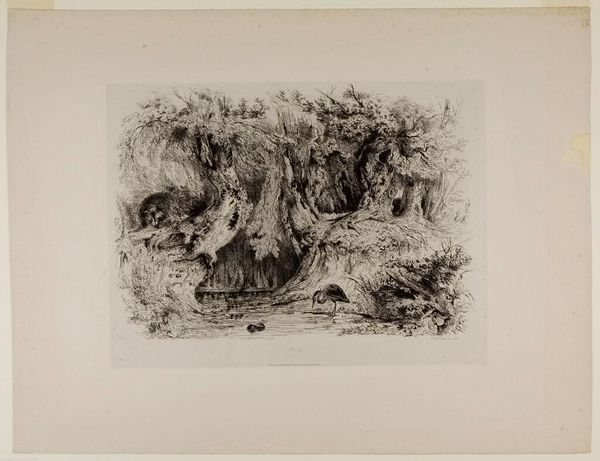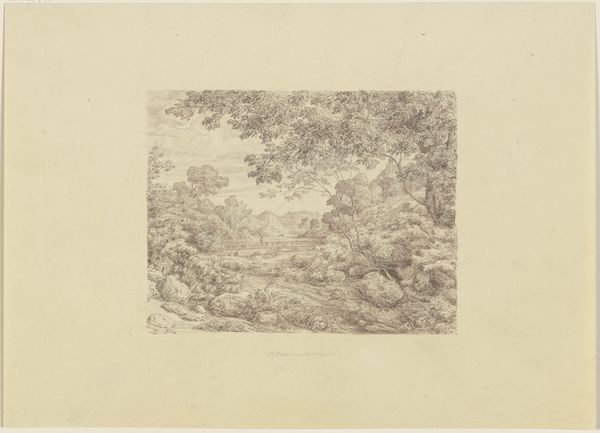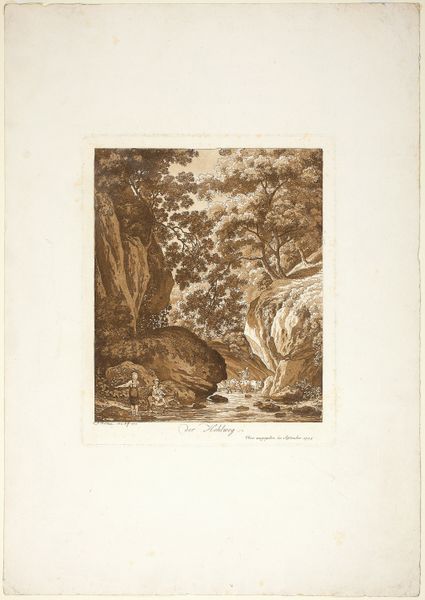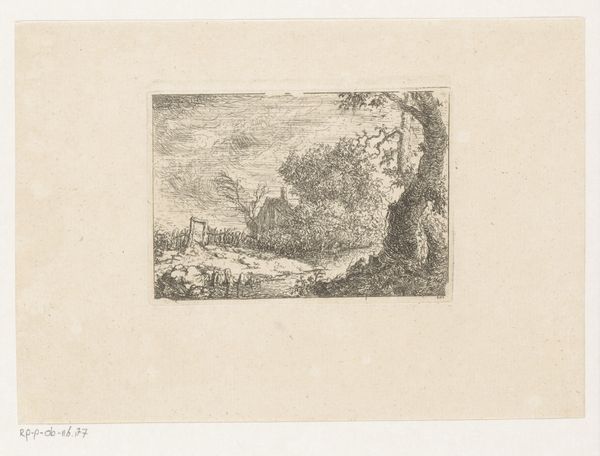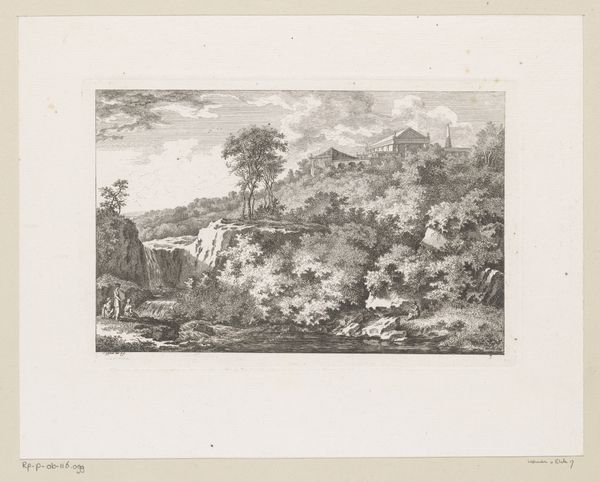
print, woodcut, wood-engraving
# print
#
landscape
#
romanticism
#
woodcut
#
united-states
#
wood-engraving
Dimensions: 7 9/16 x 10 3/8 in. (19.21 x 26.35 cm) (image)13 1/4 x 17 5/8 in. (33.66 x 44.77 cm) (sheet)
Copyright: No Copyright - United States
Curator: Here we have William James Linton's "Landscape," dating from the 19th century. It's currently part of the collection here at the Minneapolis Institute of Art. Editor: The immediate impression is one of almost overwhelming detail rendered in miniature, isn't it? The contrast of the cascading falls against the deep shadows creates a somber mood. Curator: Precisely. The composition harnesses that tonal contrast—look at how Linton balances the solid forms of the trees with the ethereality of the water. The printmaking medium, specifically wood-engraving, contributes significantly. Note the density of marks required to convey this Romantic landscape. Editor: Thinking about process, one can almost feel the intense labor involved in cutting away at the wood block, carefully delineating each tiny leaf and ripple of water. And the ubiquity of printmaking made art like this accessible to broader audiences. Curator: It speaks to the dialogue between industrial processes and artistic vision; mass production meets an attempt to capture sublime nature. This tension is crucial for understanding the piece, offering insights into Linton's socio-political engagements at the time. Semiotics also plays a critical role; we can explore what each element signifies. Editor: Right. I keep circling back to materiality though. We tend to isolate and decontextualize such engravings within the framework of “high art”, rarely pausing to appreciate it within the nineteenth-century print market – what types of papers were available to Linton and what labor conditions contributed to its creation. Curator: True, it does open a window to considering the broader socio-economic context. Examining that and the structural relationships gives this piece its strength, prompting inquiries that are relevant to today’s art-world dynamics. Editor: Indeed, viewing this piece in a critical materialist way makes me consider the legacy of art practices and labor—which are inextricably entwined with each other.
Comments
No comments
Be the first to comment and join the conversation on the ultimate creative platform.
